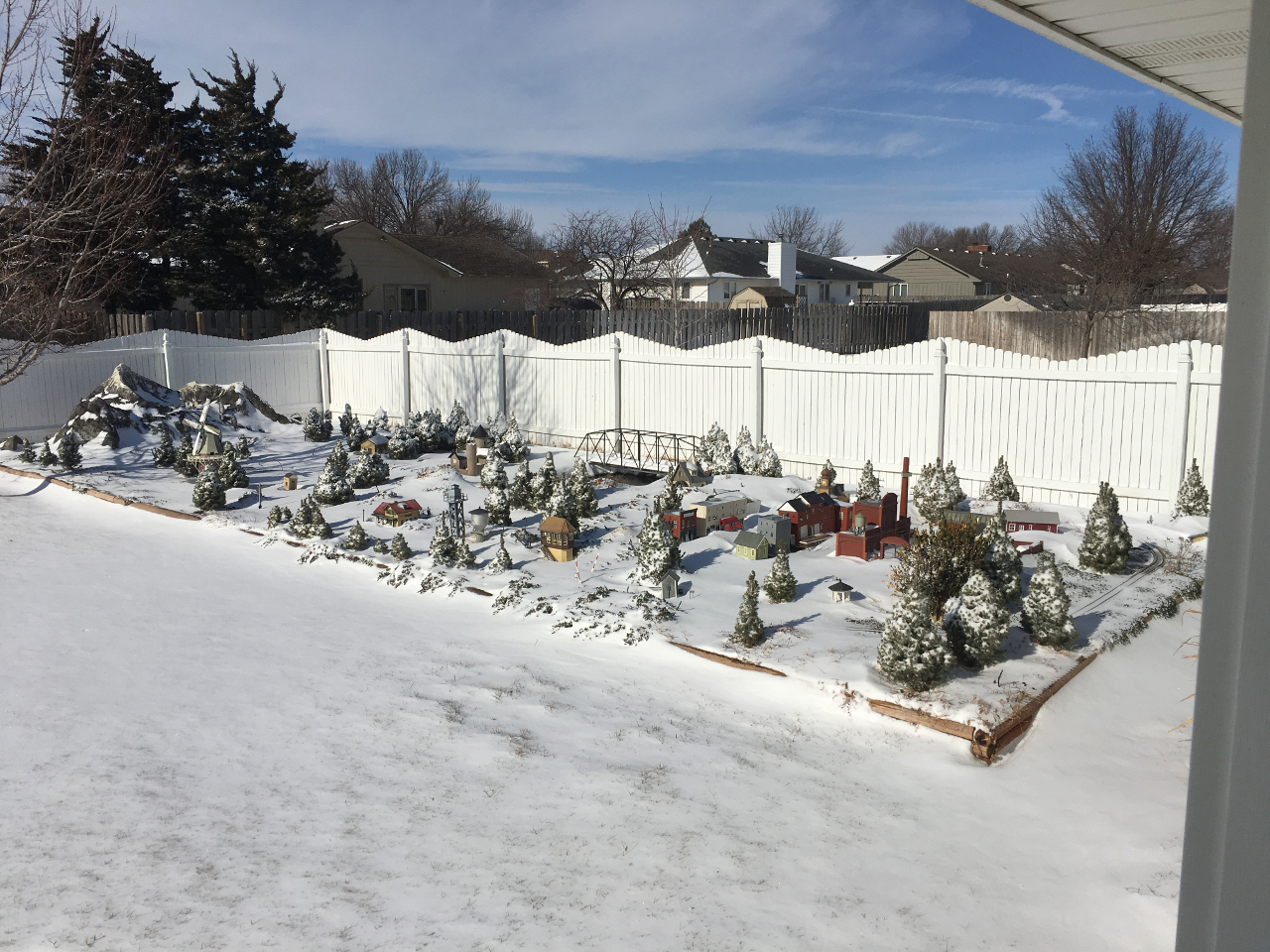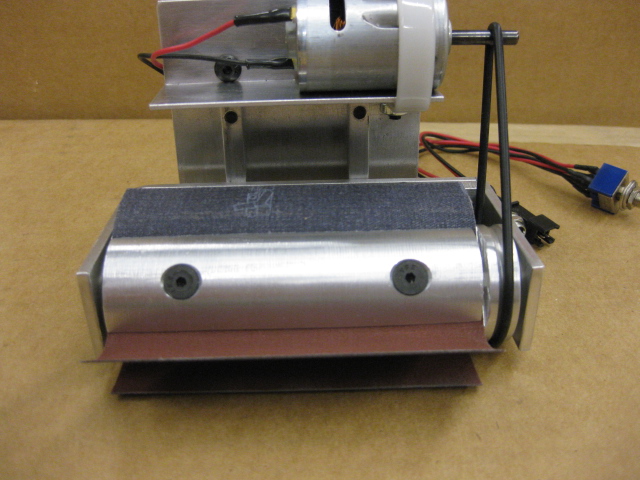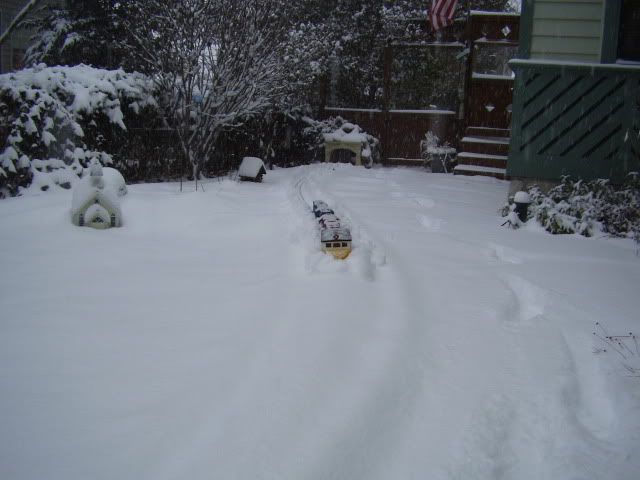So… this was my layout this weekend:

Which obviously looks really nice, and I was going to try and run trains… So using a kid’s narrow plastic snow shovel, I cleared the track and then used my pole cleaner to make a lap around the outer loop and get of a bit of the oxidized brass so I could run some sparkies. Unfortunately, there was still some ice/snow/oxidization and I basically couldn’t get even an analog LGB loco with powered tender to make it around without a lot of stopping. I gave up after a single loop (admittedly partly because it was 12 degrees with 20mph wind).
Anyone have any tips for clearing snow/ice for a running session after it snows? How about one of those camping hair dryers that’s powered by butane on a “snow melter” car? ![]()




